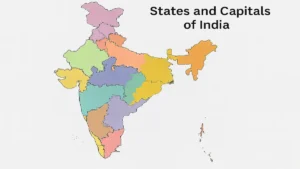The Gross Domestic Product (GDP) in the third quarter (October-December) of the current fiscal slowed to 4.4% from 6.3% in the second quarter (July-September) and 13.2% in the first quarter (April-June). This has attracted the attention of former Reserve Bank of India (RBI) Governor Raghuram Rajan, who said India is “dangerously close” to the Hindu growth rate due to subdued private sector investment, high-interest rates, and slowing global growth.
Buy Prime Test Series for all Banking, SSC, Insurance & other exams
What Is The Hindu Rate Of Growth?
- The Hindu rate of growth is a term used to describe India’s low rate of economic growth for a prolonged period. It generally shows that the country is satisfied with the slow growth rate.
- The term was first used by the late economist Raj Krishna in 1978 to refer to the low rate of economic growth in the pre-liberalization era. Krishna explained it against the backdrop of socialist economic policies.
- It must be noted that the slow growth rate is called the Hindu rate of growth only if it is persistent and is accompanied by low per-capita GDP, with population growth factored in.
- The most recent example of this is the 1980s, just before PV Narasimha Rao’s economic reforms. India’s annual population growth rate was over 2 percent, and the per-capita GDP growth rate, with 3.5 percent GDP growth, was a meager 1 percent.
- According to Krishna, this was due to the socialist policies of state control and import substitution. That changed when liberalization, privatization, and globalization (LPG) reforms were initiated in 1991 when India faced a balance of payments crisis.
Why the term ‘Hindu’?
According to reports, several economists believed that the term “Hindu” was used to link the belief in Karma and Bhagya with the slow growth. However, later liberal economists and historians like Paul Bairoch rejected this connection and instead attributed the low growth rate to the then governments’ protectionist and interventionist policies.
Rebuttal from SBI
The argument that India’s growth rate could slip to the Hindu rate of growth of around 4 percent is ill-conceived, biased, and premature, according to the State Bank of India’s economic research report Ecowrap. The report emphasized that the economy is on a sound footing.
Key Highlight of Report
- The report emphasized that gross capital formation (GCF) by the government touched a high of 11.8 percent of GDP in 2021-22, up from 10.7 percent in 2020-21.
- The report noted that in 2021-22, gross savings have risen to 30 percent from 29 percent in 2020-21. The ratio is supposed to have crossed 31 percent in 2022-23, the highest since 2018-19.
- The economy is on a sound footing as evidenced by the Incremental Capital Output ratio (ICOR) which has improved from 7.5 in FY12 to 3.5 in FY22, per the report.
Is the phrase ‘Hindu rate of growth’ outdated?
This phrase represents a certain philosophy — of existing in a blissful non-competitive state, in perfect harmony with other countries — which does not reflect the conditions existing now. The country is making rapid progress in all fields and is willing to compete with the best in almost all spheres. In a world where each country is taking care of its own, India too has learned to do the same. This kind of condescending labeling is therefore widely off the mark.
Also Read:
- ‘Soul of Steel’ expedition to challenge high altitude endurance for civilians
- TRF LeT proxy declared as a terrorist organization
- 2022 makes it to the top five: IMD










 States and Capitals of India, Check the ...
States and Capitals of India, Check the ...
 Top 10 Digital Nomad-Friendly Countries ...
Top 10 Digital Nomad-Friendly Countries ...
 India Elected to Interpol Asian Committe...
India Elected to Interpol Asian Committe...

